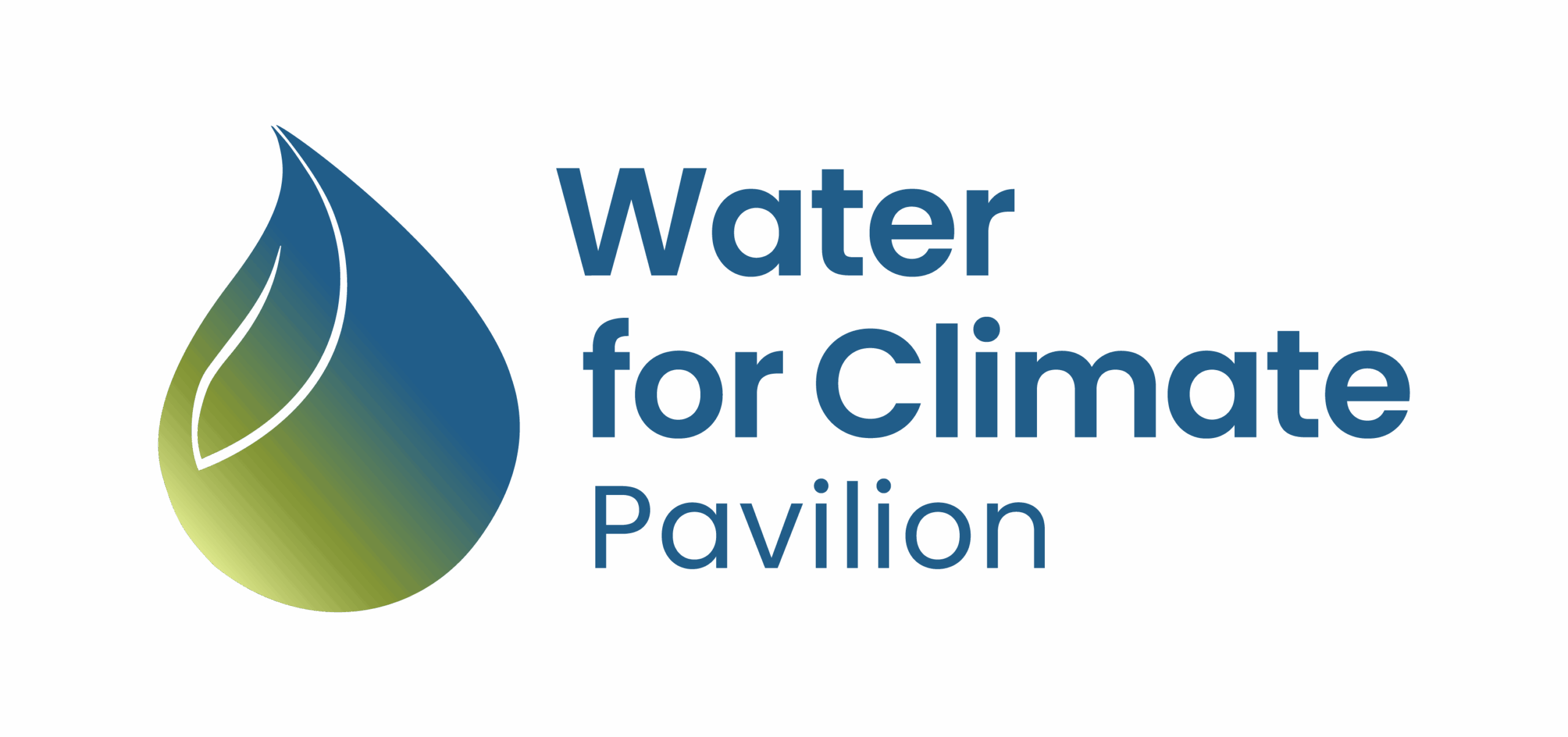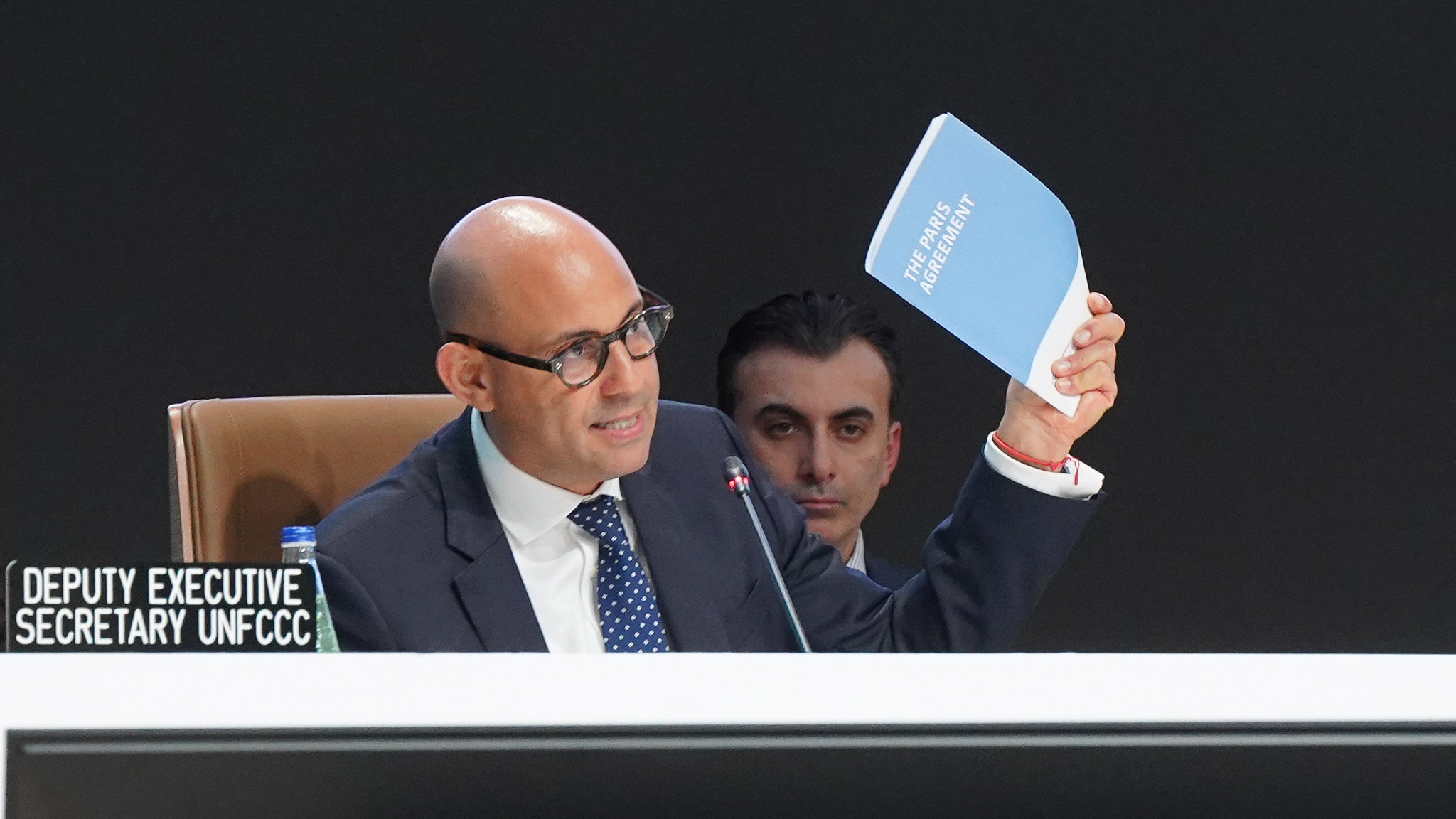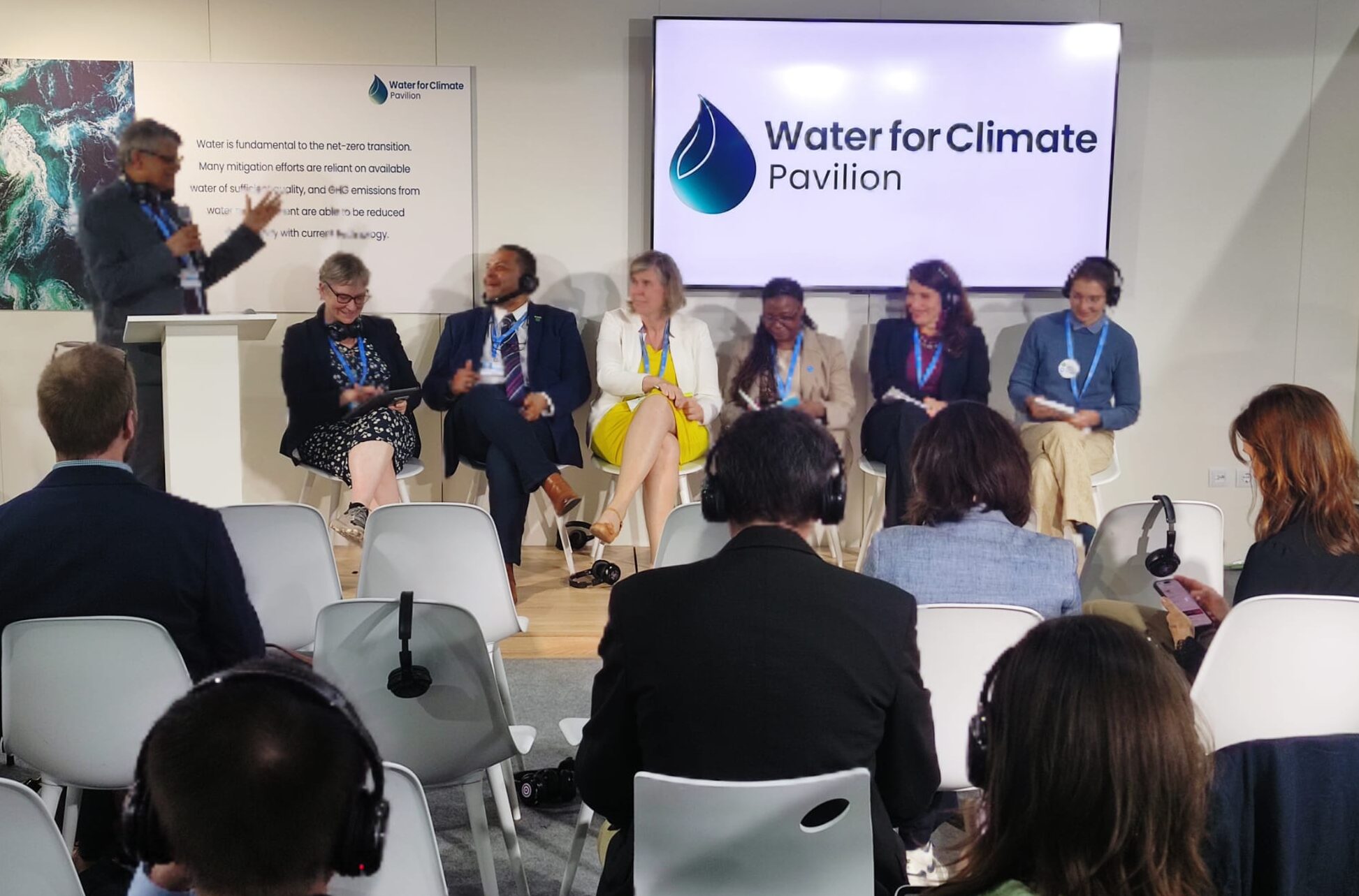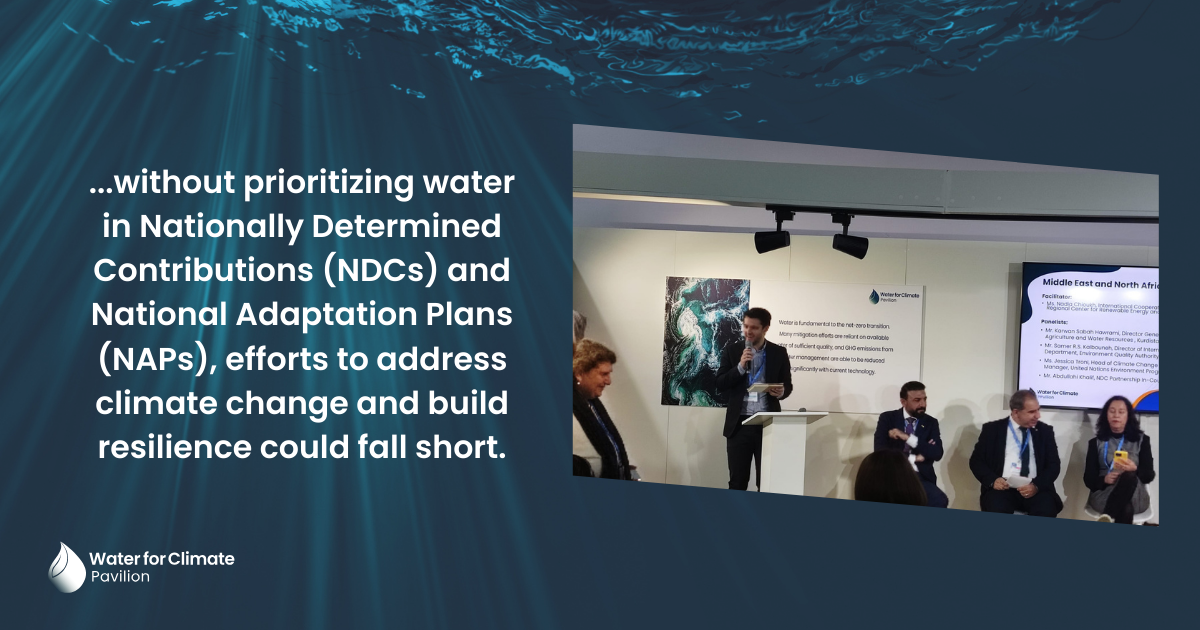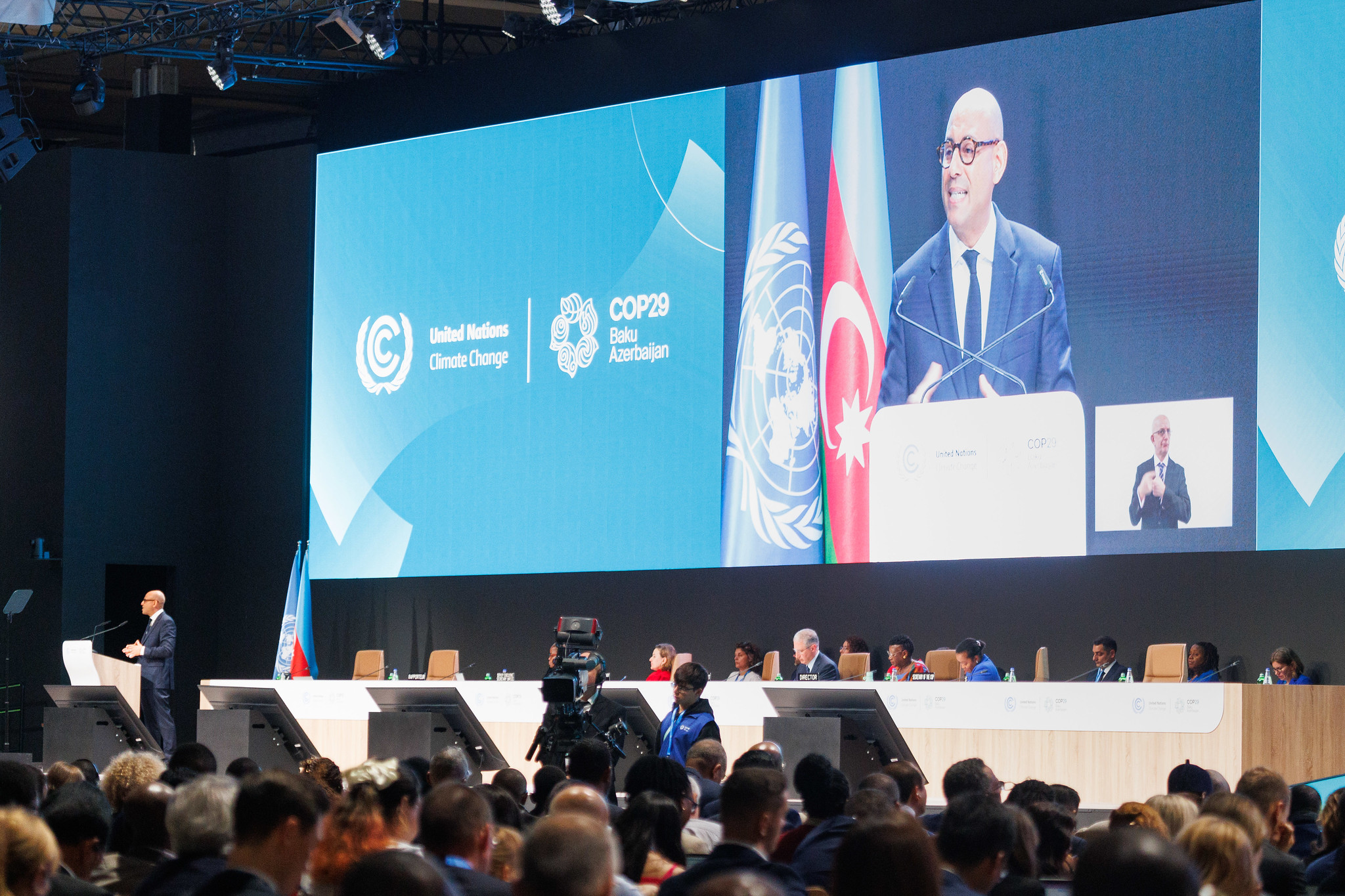Belém, Brazil — The Water for Climate Pavilion opened inside the Bairro do Mutirão para Cidades, Água e Infraestrutura with a clear message: investing in water smart solutions is essential to resilient economies, healthy communities, and a livable planet. Throughout the inauguration, speakers called for stronger multilateral cooperation and inclusive governance to translate global commitments into results that people can feel in their daily lives.
Water at the heart of the Paris Agreement
In his opening remarks, Thomas Rebermark, chair of the Water for Climate Pavilion, set the tone for the two weeks ahead. Water is not a side topic but a foundation for delivering the Paris Agreement across mitigation, adaptation, and resilience. Sessions throughout COP30 will connect water to cities, food systems, nature, health, finance, and justice, and will spotlight solutions that move from plans to implementation. “Water connects every sector. It underpins mitigation, adaptation and resilience.”
Amazon voices at the center
From the first moments, the pavilion grounded the conversation in the Amazon. Conchita Sombré from the Articulação Nacional das Mulheres Indígenas Guerreiras da Ancestralidade reminded participants that rivers are culture, livelihood, and identity. Protecting water means protecting the peoples and territories that safeguard headwaters and river systems.
Key point: policy must be made with those who care for rivers and springs, and it must value their knowledge, their rights, and their role as guardians. “Proteger os rios é também proteger quem cuida deles.”
Brazil’s call for people centered action
Representing the Ministry of Integration and Regional Development, Valdir Ribeiro emphasized that water management is central to protecting lives and services, especially in vulnerable territories. He linked national action to the Sustainable Development Goal on water and sanitation and invited collaboration in the Water Action Agenda Acceleration Plans, underlining that what happens in the Amazon shapes rainfall, agriculture, biodiversity, and water security well beyond Brazil.
Water in global processes and the road to the UN 2026 Water Conference
Abdullah Abba highlighted momentum since COP28 and the path toward the United Nations Water Conference in 2026, co led by the United Arab Emirates and Senegal. His message was simple and strategic: keep water present in multilateral spaces, and scale technologies and investments that secure water in arid regions while serving global needs.
Practical levers: technology, planning, and nature
Meike van Ginneken, (Netherlands Special Water Envoy) distilled three practical levers to make water the engine of resilience:
-
Deploy proven technologies at speed and scale.
-
Make water the guiding principle in spatial planning.
-
Work with nature by restoring and preserving natural water buffers.
She stressed that success at COP30 means defending multilateralism, agreeing on a focused set of practical indicators for the Global Goal on Adaptation, and prioritizing implementation that delivers real change for teachers, farmers, and families on the front lines.
People centered delivery and mobilizing finance
Ingrid Gabriela Hoven (GIZ) pointed to a shift already underway: companies and municipalities are investing together in watershed management because water is life and water is business. Reforestation, soil restoration, and payment for ecosystem services are making farms more productive and cities more secure. The lesson is clear: align public policy, local benefits, and private investment to unlock scale.
From indicators to implementation
Mattias Frumerie, (Sweden’s Climate Ambassador) connected the science to finance and implementation. With hundreds of millions already living in new hydrological realities, climate finance must act catalytically to de risk investment in resilient water systems. As Parties adopt indicators for the Global Goal on Adaptation and submit new NDCs, governments can raise ambition with confidence that solutions and finance exist.
Rethinking water across its many forms
Dr. Arunabha Ghosh invited a wider imagination of water: the frozen stores in mountains, the green water in soils that sustains agriculture, and the atmospheric rivers that move moisture across continents. He urged a practical agenda between now and the UN Water Conference: implement NDCs through water by governing and financing water as a strategic asset, and design investment to capture cross sector synergies across energy, food, cities, and nature.
Youth leadership and the value of water
Elisabeth Vatutti, founder of the Green Generation Initiative, brought the voices of youth and communities. From Kenya’s water towers to global demand for freshwater in new sectors like data centers, she called for water to move from the margins to the center of UNFCCC processes. Water must be visible in mitigation, adaptation, and resilience, and it must be treated as a common good that connects people across borders and generations.
Human rights and the case for a water transition
Pedro Arroyo Arbudo, UN Special Rapporteur on the human rights to safe drinking water and sanitation, argued that while energy drives mitigation, a water transition must drive adaptation. Adaptation is local and immediate, and governments have a duty to protect the most vulnerable through flood and drought risk reduction, safe water and sanitation, and ecosystem protection.
What the Pavilion will champion at COP30
-
Investing in water smart solutions to build resilient economies, healthy communities, and a livable planet.
-
Integrating water across policy domains so climate, energy, agriculture, and urban planning pull in the same direction.
-
Strengthening inclusive governance that centers Indigenous Peoples, local communities, women, and youth.
-
Accelerating implementation by aligning indicators, finance, and delivery pathways from national plans to local action.
-
Scaling nature based solutions that restore buffers, protect headwaters, and secure water quality.
-
Mobilizing finance through public private partnerships, water funds, and payment for ecosystem services.
Explore the Pavilion program, engage with the sessions on cities, nature, food systems, and water and sanitation, and bring forward practical cases and partnerships that can scale in 2025 and beyond.

